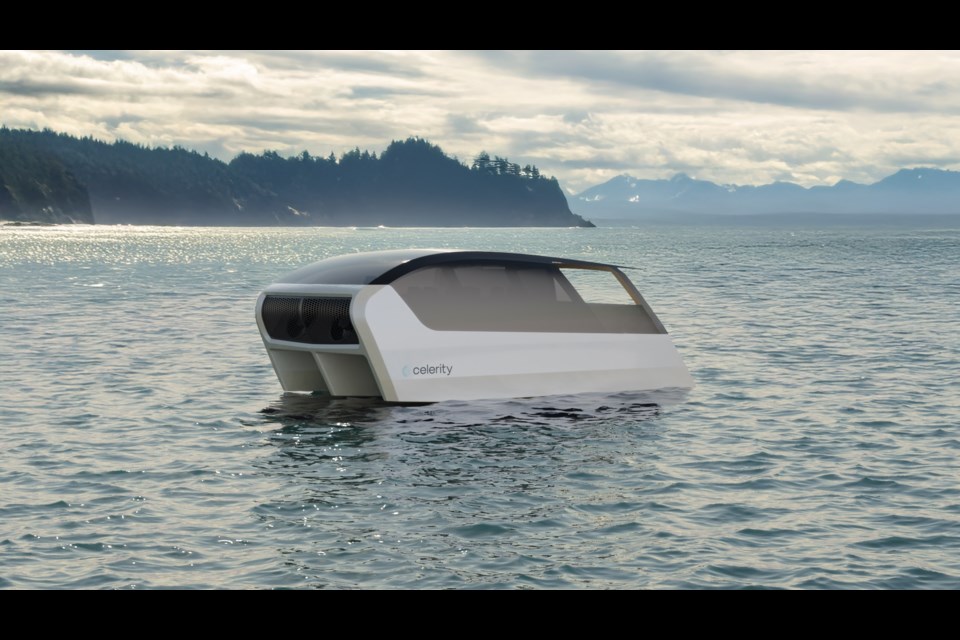A local technology company is looking to revolutionize the way people move across the water.
Celerity Craft is working towards building the Dynamic Air Cushion Vehicle (DACV), an amphibious marine vessel that uses air to travel across water and land.
Company chief executive officer, Richard MacKellar, told The Squamish Chief that the company hopes to have the first product on the market by 2027.
And while it does fall into the category of a hovercraft, MacKellar said there are key differences that separate his vessel from the typical hovercrafts we know now.
“A hovercraft is a type of air cushion vehicle. We're also a type of air cushion vehicle, and there are different ways you can do an air cushion vehicle. So we fit in that same category as a hovercraft, but we turned some of the physics on its head,” he said.
Fisheries and Oceans Canada describes the standard hovercraft as having an air cushion under the vessel, which is “created by two engines, each of which turns a shaft that drives centrifugal fans.”
“These fans direct the outside air toward the bottom of the hull and inside the black skirt that is fastened around the perimeter of the hull with hinges. Air escapes through the lower openings of these segments to lift the hovercraft. It is this lift phenomenon that supports and provides stability to the hovercraft,” reads the website.
MacKellar said that instead of “dragging the cushion along underneath the vessel,” the DACV creates an energized column of air that is passed underneath the vessel, which creates both the lift and thrust.
“We're leaving the cushion in the environment, so it stays still and the vessel moves over the top, and that saves a lot of energy,” he said.
Amphibious nature
While aiming to create a marine vessel that goes “faster, smoother and more efficiently” than standard boats, they’re also using the DACV technology to go across land too.
What this means is that the craft will be able to go directly from the water and onto the land just by using air.
“It's using the air to do both the lift and the thrust, so the only thing driving this forward are those two fans on the bow,” MacKellar said.
While it won’t be capable of going over all types of terrain, a sandy beach will be prime conditions for the Celerity vessel.
“You're not going to go across a big, rocky beach. It can cope with a certain amount of lack of uniformity, but it's going to be beaches that it is very good at going across,” he said.
Environmentally friendly
Because the vessel has no propellers in the water, its disturbance on the marine life below will be minimal.
“Propellers in the water have a problem called cavitation, and when cavitation occurs, the vapour pressure of the water gets below that at which it forms a gas,” MacKellar said.
“When that happens, bubbles come off. When that occurs, it makes a big noise underwater, and that's what disturbs the whales and the dolphins and seals and the sea lions. And so, because we have nothing in the water, we don't have that problem of noise that disturbs them.
“And because we're out of the water, we're less likely to hit a whale or anything like that.”
The vessel can also be made entirely electric or with a diesel engine.
The product
The first product on the market will be 11.9 metres in length and will be able to carry 12 passengers and will likely reach speeds of up to 60 knots.
“There's a very good reason why we choose this [size]. Transport Canada has various levels of requirements, and if you hit 12 metres, 13 passengers or 15 tonnes, then you go off into the next class,” MacKellar said.
“So first, to get into the market, we want to hit the area with the easier classification. But then, [we want to] expand in three dimensions. We go bigger, we go to new markets, and we go to new geographies, and that's how we grow as a company.
“I want people to be doing a cruise ship that can go from here to Hawaii in two days, not in five.”
He also has aims of creating vessels for BC Ferries and to serve military and rescue operations.
“Ultimately, our objective is big. We want to replace half of the vessels in the world out there—so [to build] many sizes. We want to service the coastal communities here in B.C., but we want to go across the world,” he said.
“We want to go bigger and bigger and bigger, and we want to go into new markets. So there are many different markets that this could potentially serve.”
But he knows it won’t be perfect for all marine uses.
“It's not going to replace everything out there. We are not going to replace shipping, iron ore and coal and things like that. That's not where we're going to be appropriate, but it's fully appropriate for ferries,” he said.
To date, the company already has three pre-orders.
Celerity Craft is located at 113-1111 Pioneer Way, Squamish.
To learn more about the company and DACV technology, visit the Celerity Craft website.



